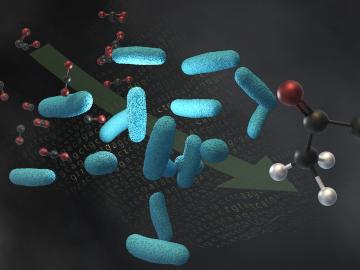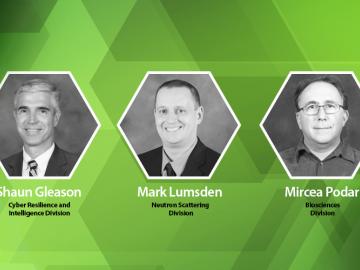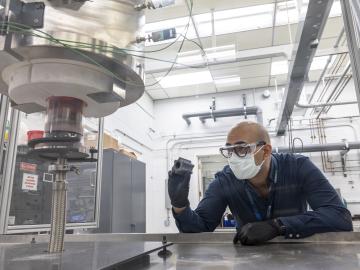
Filter News
Area of Research
- Advanced Manufacturing (1)
- Biology and Environment (18)
- Computer Science (1)
- Energy Science (19)
- Fusion and Fission (4)
- Fusion Energy (1)
- Materials (27)
- Materials for Computing (1)
- National Security (16)
- Neutron Science (11)
- Nuclear Science and Technology (7)
- Quantum information Science (1)
- Supercomputing (15)
News Type
News Topics
- (-) Advanced Reactors (16)
- (-) Biotechnology (19)
- (-) Clean Water (9)
- (-) Composites (17)
- (-) Cybersecurity (24)
- (-) Physics (43)
- (-) Quantum Computing (17)
- (-) Statistics (1)
- 3-D Printing/Advanced Manufacturing (72)
- Artificial Intelligence (55)
- Big Data (29)
- Bioenergy (52)
- Biology (57)
- Biomedical (34)
- Buildings (32)
- Chemical Sciences (52)
- Computer Science (93)
- Coronavirus (23)
- Critical Materials (13)
- Education (3)
- Element Discovery (1)
- Emergency (1)
- Energy Storage (61)
- Environment (91)
- Exascale Computing (26)
- Fossil Energy (1)
- Frontier (27)
- Fusion (28)
- Grid (28)
- High-Performance Computing (57)
- Hydropower (2)
- Irradiation (1)
- Isotopes (37)
- ITER (4)
- Machine Learning (27)
- Materials (80)
- Materials Science (75)
- Mathematics (5)
- Mercury (6)
- Microelectronics (1)
- Microscopy (31)
- Molten Salt (3)
- Nanotechnology (38)
- National Security (40)
- Neutron Science (71)
- Nuclear Energy (52)
- Partnerships (36)
- Polymers (19)
- Quantum Science (40)
- Security (19)
- Simulation (23)
- Software (1)
- Space Exploration (3)
- Summit (26)
- Transportation (49)
Media Contacts

To solve a long-standing puzzle about how long a neutron can “live” outside an atomic nucleus, physicists entertained a wild but testable theory positing the existence of a right-handed version of our left-handed universe.

How an Alvin M. Weinberg Fellow is increasing security for critical infrastructure components

Scientists’ increasing mastery of quantum mechanics is heralding a new age of innovation. Technologies that harness the power of nature’s most minute scale show enormous potential across the scientific spectrum

ORNL and the Tennessee Valley Authority, or TVA, are joining forces to advance decarbonization technologies from discovery through deployment through a new memorandum of understanding, or MOU.

A team of scientists from LanzaTech, Northwestern University and ORNL have developed carbon capture technology that harnesses emissions from industrial processes to produce acetone and isopropanol

A study led by researchers at ORNL used the nation’s fastest supercomputer to close in on the answer to a central question of modern physics that could help conduct development of the next generation of energy technologies.

ORNL, TVA and TNECD were recognized by the Federal Laboratory Consortium for their impactful partnership that resulted in a record $2.3 billion investment by Ultium Cells, a General Motors and LG Energy Solution joint venture, to build a battery cell manufacturing plant in Spring Hill, Tennessee.

Spanning no less than three disciplines, Marie Kurz’s title — hydrogeochemist — already gives you a sense of the collaborative, interdisciplinary nature of her research at ORNL.

Three ORNL scientists have been elected fellows of the American Association for the Advancement of Science, or AAAS, the world’s largest general scientific society and publisher of the Science family of journals.

A novel method to 3D print components for nuclear reactors, developed by the Department of Energy’s Oak Ridge National Laboratory, has been licensed by Ultra Safe Nuclear Corporation.


